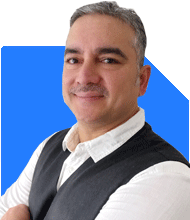Ramalingam Kalirajan |10894 Answers |Ask -Follow
Mutual Funds, Financial Planning Expert - Answered on May 15, 2024
He has an MBA in finance from the University of Madras and is a certified financial planner.
He is the director and chief financial planner at Holistic Investment, a Chennai-based firm that offers financial planning and wealth management advice.... more

I am 43 years old.i want to start investing in SIPs. I plan to put Rs50k every month for a period of around 17 years till retirement. Kindly advise what SIPs should i choose at start to get a 14-15% growth with medium risk?
Understanding Your Financial Goals
Before diving into investment recommendations, it's crucial to understand your financial aspirations, risk tolerance, and time horizon. By aligning your investments with your goals, we can design a portfolio that maximizes growth potential while managing risk effectively.
Asset Allocation Strategy
To achieve your target growth with medium risk, we'll adopt a balanced asset allocation approach, combining equity and debt instruments. Equity funds offer growth potential, while debt funds provide stability and income generation.
Equity SIPs (70% Allocation):
Large Cap Funds (30%): Invest in large-cap funds for stability and steady growth potential. These funds focus on well-established companies with a track record of performance and market leadership.
Multi Cap Funds (40%): Allocate a significant portion to multi-cap funds, offering diversification across market capitalizations. These funds have the flexibility to invest in companies across sectors and market segments, enhancing growth potential.
Debt SIPs (30% Allocation):
Short Duration Funds (15%): Park a portion of your SIP investments in short-duration funds for stability and income generation. These funds invest in debt securities with a maturity period of 1-3 years, providing relatively stable returns.
Dynamic Bond Funds (15%): Opt for dynamic bond funds to capitalize on interest rate movements while managing risk effectively. These funds dynamically adjust their portfolio duration based on interest rate outlook, maximizing returns in different market conditions.
Considerations:
Risk Management: While targeting higher growth, it's essential to balance risk by diversifying across asset classes and fund categories. Regularly review your portfolio's performance and rebalance if necessary to maintain the desired asset allocation.
Long-term Perspective: Stay committed to your investment plan and maintain a long-term horizon. SIPs thrive on consistency and discipline, allowing you to benefit from the power of compounding over time.
Professional Guidance:
Consider consulting with a Certified Financial Planner to validate your investment strategy and ensure it aligns with your financial goals and risk tolerance. A CFP can provide personalized recommendations and help you navigate market uncertainties effectively.
Conclusion:
By adopting a strategic SIP investment plan with a balanced asset allocation between equity and debt funds, you can potentially achieve your target growth of 14-15% with medium risk over a 17-year horizon. Stay focused on your financial goals, review your portfolio periodically, and seek professional guidance when needed to optimize your investment strategy.
Best Regards,
K. Ramalingam, MBA, CFP,
Chief Financial Planner,
www.holisticinvestment.in
You may like to see similar questions and answers below
Omkeshwar Singh | Answer |Ask -Follow
Head, Rank MF - Answered on Feb 16, 2022
Nikunj Saraf | Answer |Ask -Follow
Mutual Funds Expert - Answered on Mar 06, 2023
Advait Arora | Answer |Ask -Follow
Financial Planner - Answered on Jan 18, 2024
Ramalingam Kalirajan |10894 Answers |Ask -Follow
Mutual Funds, Financial Planning Expert - Answered on May 02, 2024
Ramalingam Kalirajan |10894 Answers |Ask -Follow
Mutual Funds, Financial Planning Expert - Answered on May 23, 2024
Mayank Chandel |2576 Answers |Ask -Follow
IIT-JEE, NEET-UG, SAT, CLAT, CA, CS Exam Expert - Answered on Dec 17, 2025
Radheshyam Zanwar |6747 Answers |Ask -Follow
MHT-CET, IIT-JEE, NEET-UG Expert - Answered on Dec 16, 2025
Shalini Singh |181 Answers |Ask -Follow
Dating Coach - Answered on Dec 16, 2025
Patrick Dsouza |1429 Answers |Ask -Follow
CAT, XAT, CMAT, CET Expert - Answered on Dec 16, 2025
Nayagam P P |10858 Answers |Ask -Follow
Career Counsellor - Answered on Dec 16, 2025
Nayagam P P |10858 Answers |Ask -Follow
Career Counsellor - Answered on Dec 16, 2025
Samraat Jadhav |2510 Answers |Ask -Follow
Stock Market Expert - Answered on Dec 16, 2025
Samraat Jadhav |2510 Answers |Ask -Follow
Stock Market Expert - Answered on Dec 16, 2025
Nayagam P P |10858 Answers |Ask -Follow
Career Counsellor - Answered on Dec 16, 2025
Nayagam P P |10858 Answers |Ask -Follow
Career Counsellor - Answered on Dec 16, 2025




























